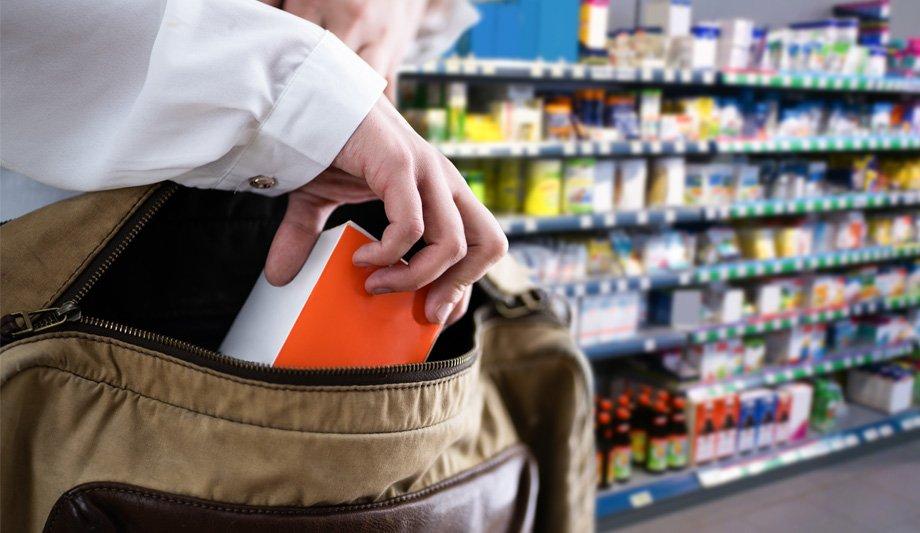Shoplifting is often viewed as petty theft by individuals, but that is not always the case. Overall, shoplifting is becoming more sophisticated and coordinated. Sometimes, retail crimes are strategic and expertly choreographed. Every step is carefully thought out — from the brand to the location to the items that are taken.
Shoplifting, a major safety concern
Also, the violence that accompanies these events is rising. Shoppers are rightly concerned about their safety while shopping, and the brand reputations of retailers are under threat.
Traditional ‘shoplifting’ has two major differences, when compared to organised retail crime (ORC). The differences are numbers and motivation. ORC consists of groups working together to monetise theft, very different than an individual taking an item they need.
Rise in organised retail crimes (ORC)
ORC groups take in-demand items that they can resell for a profit, either online or at a physical location
ORC groups take in-demand items that they can resell for a profit, either online or at a physical location. Also, ORC attacks are not random - they come with a high level of strategic thinking.
“Armed with the right tools, retailers can identify ORC patterns that allow them to potentially anticipate and take steps to mitigate future events,” said Craig Szklany, the Vice President and Product General Manager - Loss Prevention & Liability at Sensormatic Solutions.
Although ORC was rising before 2020, the COVID-19 pandemic and its impact on people’s lives and livelihoods accelerated the trend.
Economy impacts shoplifting
The economy also impacts shoplifting. “When consumers have less money to spend, they are more likely to steal necessities,” said Craig Szklany, adding “Keeping food on the table or finding an alternate source of income to pay the mortgage can be powerful motivators, and some individuals turn to retail crime to keep up.”
One tool to fight shoplifting is analytics, which can be used to determine where shrink is occurring. Craig Szklany continues, “Understanding where crimes take place helps retailers make strategic decisions about where to place their loss prevention efforts.”
Loss prevention systems with artificial intelligence (AI)
Some of these systems are equipped with artificial intelligence (AI) that can identify ‘red’ and ‘green’ shoppers (thieves versus well-intentioned customers), as they move throughout the store, so retailers can respond proactively to potential threats.
With enough data on these patterns, systems can alert retailers of at-risk locations"
“Widespread use of these technologies can also help track ORC groups, as they move around regions or countries,” said Craig Szklany, adding “With enough data on these patterns, systems can alert retailers of at-risk locations.”
He continues, “The increased use of scan-and-go and other forms of self-service checkout has made it easier for consumers to steal. Implementation of these systems has been one of the biggest factors in increased shrink for retailers.”
Store visibility technology
“The purpose of scan-and-go is to provide a seamless shopping experience for consumers, with smoother checkout and to help retailers reduce the need for employees,” stated Craig Szklany, adding “However, with increased theft, retailers need some form of monitoring at these sections.”
He continues, “With store visibility technology and AI, retailers can both monitor self-checkout for theft, while also gathering insights that enable them to better identify and predict theft at these checkouts.”
Intelligence-led loss prevention technology
Craig Szklany adds, “Intelligence-led loss prevention technology provides a huge return on investment (ROI). Traditionally, items that left the store were as good as gone. With RFID and smart-exit technology, that is no longer the case.”
These systems allow retailers to quantify theft events and include data on what was stolen and how much it cost. With that information, retailers can take a proactive approach to theft prevention, by providing enhanced evidence packages to law enforcement, which increases the chances of the items being returned to stores.
Challenge of shift to the Internet of Things (IoT)
The biggest change in retail technology in the last five years is the shift to the Internet of Things (IoT)
The biggest change in retail technology in the last five years is the shift to the Internet of Things (IoT) and Store Visibility technology. Stores outfitted with integrated tags, pedestals, and AI-enabled video cameras can be connected holistically, so that retailers have a clearer insight into the thieves’ journeys in real-time.
That data helps prevent future theft. These technologies provide a more accurate look into what exactly went missing, when, and where, which allows retailers to respond to shoplifting, in a way that they had not been possible in the past.
Modern loss prevention technologies offer flexibility
“The great thing about modern loss prevention technologies is that they’re flexible,” stated Craig Szklany, adding “The same system that tracks ORC events can provide insight into energy use, floor optimisation, customer experience, and more.”
RFID tags allow retailers to track inventory at the item level, so they are better prepared to make decisions about stocking and promotions. Computer-vision-based AI (artificial intelligence) that identifies ‘red’ and ‘green’ shoppers can also track customer sentiments and demographics, to enable retailers to offer special discounts and enhanced customer service, in order to improve customer experiences and establish loyalty.
Benefits of video loss prevention technologies
Ahead of busy shopping seasons, many retailers hire extra employees to serve as physical deterrents against theft, but labour shortages may take this practice out of reach this year.
Video loss prevention technologies can reinforce retailers’ workforce, allowing them to be proactive against theft without drawing associates from their main goal: helping customers.








